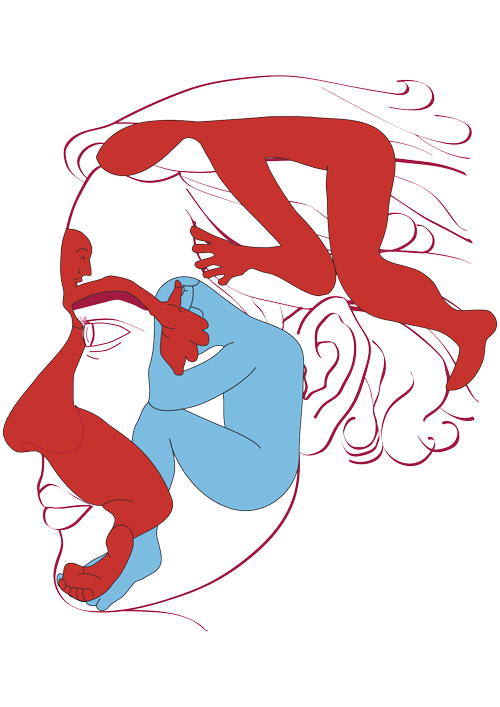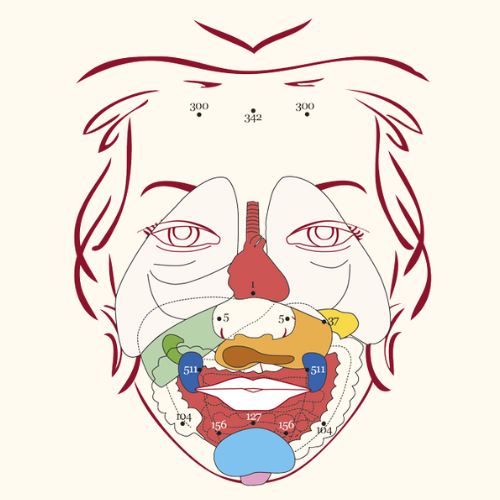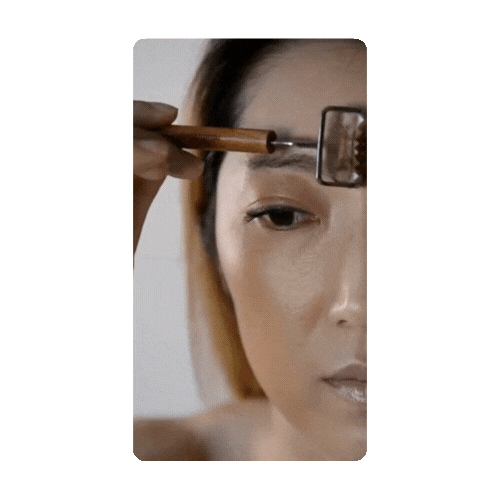Unlocking Jaw Tension with Facial Reflexology: How Dien Chan and Multireflexology Zones Reveal the Root Cause
Jaw tension, TMJ pain, and teeth grinding are often treated as local issues — but in Dien Chan (Facial Reflexology) and Multireflexology, they’re part of a much larger story. In this approach, we explore how reflex zones on the face correlate with other parts of the body, revealing the true source of imbalance.
Understanding Facial Reflexology Zones: Penfield and Rodin Maps
Facial Reflexology uses detailed facial maps to access the entire body through the face. In this treatment breakdown, we explore two essential maps:
-
Rodin Diagram: This facial reflexology zone corresponds with structural and musculoskeletal zones such as the jaw, hips, and shoulders.
-
Penfield Diagram: A more neurological map, it represents the sense organs, nervous system, and reflexes connected to the mouth, throat, and brain stem.


When a client presents with jaw tension, TMJ dysfunction, or facial clenching, we never treat the jaw alone. These reflex zones help us locate and release underlying patterns — often rooted in the hips, shoulders, or thoracic spine.
Why Jaw Pain Is Rarely “Just Jaw Pain”
In Dien Chan, everything is interconnected. Jaw tension often mirrors patterns in the hips or upper chest. Reflexology reveals this beautifully: the jaw and hips share structural and energetic symmetry, meaning tension in one often reflects tension in the other.
Common Contributors to Jaw Tension:
-
Misalignment or tightness in the hips or shoulders
-
Restricted movement in the thoracic spine
-
Blockages in the nape or neck zone on the Penfield diagram
-
Nervous system overload (grinding, clenching, or jaw locking)
By working within specific reflexology zones, we unlock not just muscle tissue but underlying fascia and energetic channels as well.
The Multireflex Approach: How to Release Jaw Tension Step-by-Step
In the full protocol shared in our free video training, we demonstrate how to use Multireflex tools across reflex zones of the face and scalp. Here's a simplified outline of the process:
-
Start with the Penfield Shoulder Zone
Using the Penfield map, we begin by addressing the shoulder reflex — a key area connected to jaw and neck tension. -
Explore the Hairline and Nape
These areas often hold subtle restrictions. Using three different tools helps provide a multi-dimensional treatment. -
Add Movement
We ask the client to gently open and close their jaw as we work. This dynamic engagement gives us feedback on the tissue’s response and supports myofascial release. -
Disperse and Recheck
Switching to dispersing tools, we target areas of density or stagnation. Rechecking the tissue shows immediate shifts in tone and sensitivity. -
Mirror the Other Side
We repeat the sequence on the other side of the face, ensuring balance and symmetry. -
Reflect Beyond the Face
We always finish by checking the corresponding body zones — hips, shoulders, chest, and feet — to ensure the body is rebalanced holistically.
Why This Protocol Works — Every Time
Facial Reflexology in the Dien Chan method works because it’s not about symptom-chasing. We listen to the body’s map, respond to what we find, and support its own capacity to self-correct.
This Multireflexology protocol:
-
Relieves jaw pain without invasive treatments
-
Supports long-term nervous system regulation
-
Helps clients feel seen and heard through subtle body cues
-
Builds practitioner confidence with repeatable, responsive techniques
Learn These Techniques for Free
If you want to see exactly how I treat TMJ, jaw pain, and facial tension, I’ve created a free video tutorial showing my process in detail.
This video is available inside the Free Masterclass folder on our school platform.
Click below to start watching and explore how facial reflexology can transform your approach to tension, pain, and deeper healing.
Watch the Free Training inside our free student account









